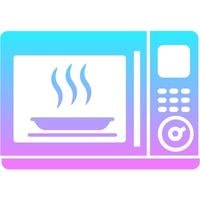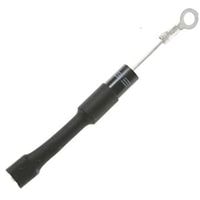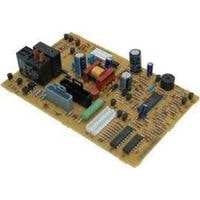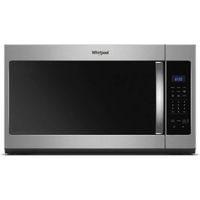Whirlpool microwave not heating. A microwave oven may be one of the most important devices that one can find in a kitchen.
You can use them to conveniently heat up your food, and they have a heat-energizing function needed to make a variety of meals inside their internal containers (or the oven itself).
Many microwaves also act as an oven, capable of equally cooking certain recipes using only electromagnetic energy.
Whirlpool microwave not heating
The Whirlpool microwave is not heating. If a microwave is running but the food is not being heated, it could be that you need to replace some of the parts inside the microwave such as the diode.
The diode allows electrical current to pass through in only one direction. If the diode burns out, there may be a short, which will allow electricity to flow in both directions or not fully in one direction.
Reviewing the power supply
If the microwave doesn’t power on, check for the simple problem of a tripped circuit breaker, or an outlet that doesn’t work.
While you’re checking things out, if there are any other light fixtures in your kitchen that don’t work at all, you may also want to double-check that all the fuses are working
properly before you move on to more complex problems like burnt microwave coils.
Defected diode
The diode converts the AC power from the transformer to DC current, doubling the voltage to nearly 5000 volts. This high voltage powers the magnetron to heat up the food.
If the diode fails, then the microwave will not be able to heat up. You can test if this component is faulty by examining it.
With a multimeter or placing an external 9V battery in parallel or series with it and observing if there is continuity when you switch between having no battery, just one, and both together.
(Warning: The microwave can store a lethal amount of electricity in its high voltage capacitor even after it has been unplugged so it’s extremely dangerous to replace any of its electrical components. Only a licensed technician should replace this component.)
Door switches should be checked
Most microwaves nowadays have multiple door switches installed within them. These door switches are utilized to ensure that the microwave will not start unless the door is completely shut down.
Most people notice if the microwave won’t activate with an open door. Similarly, if any of these door switches are defective, it can result in your microwave misbehaving and subsequently not heating up your food properly.
To check the integrity of these door switches, you will have to unscrew each and every switch and attempt a multimeter for any faults. Replace the switches which show negative results on the multimeter as it suggests that they need to go.
Control Board Issues
Another important component of your microwave is the control board. If you’ve run into problems before with getting it to work, then chances are it is just the control board that has gone bad.
You will have to search for any sign that your control board has been damaged on the inside such as burnt coils or cracks.
In case you do find signs of damage like this, it may be a good idea to replace the entire control board as repairing it isn’t really suggested.
The magnetron needs to be replaced.
Using high voltage, high-frequency alternating current, this microwave oven produces microwave frequencies. The magnetron produces microwaves that are absorbed by the food and then heated or reheated.
If the magnetron is burnt out and doesn’t work, the microwave will not work either. The magnetron cannot be replaced if it burns out because it can be dangerous to handle all that’s needed is a new one.
(Warning: After using this product, the interior remains under high voltage while any residual current runs itself through whatever conductive material touches both sides.) A warning light will appear if there is a problem or if there are error messages in the display.
Faulty Thermal Fuse
When the microwave gets too hot, the thermal fuse cuts off the power to the microwave. Using a multimeter, test continuity to determine if the thermal fuse is blown. Replace it if the continuity is not present.
In the event of a blown thermal fuse, you will need to replace it. A microwave can store thousands of volts of electricity in its high voltage capacitor, even after being unplugged.
Due to the possibility of electric shock, it is extremely dangerous to replace the microwave’s electronic components. Only a licensed technician should replace the microwave’s thermal fuse.
Problem with a high-voltage capacitor
The capacitors work with the diode to convert the output of the transformer to DC voltage and double the output voltage. If one of these capacitors is bad, it can cause a lot of problems in the circuit.
You may not be able to let your oven do its thing while you go off and accomplish other tasks.
To see if one of these capacitors has given up on working, take a capacitor meter (also called a VOM) that has been known to do a good job at testing such things out into address it and see just how much juice your appliance can still hold on to before having another capacitor placed in it (which should hopefully replace any faulty ones).
The Thermo protector lacks continuity
Overheating of the microwave is protected by a Thermo protector. Test the continuity between each pair of heating elements in your microwave oven using a meter if the Thermo protector trips and turns off.
If there are more than one pair of elements in your unit, test between each pair as well. In the event, these tests reveal a problem you need to call a licensed technician since this is dangerous work due to the high voltage present.
When the unit is on which can reach thousands of volts depending on how old or new it is, so again, take this seriously and hire someone who has the proper experience to handle it safely.
Whirlpool microwave not heating
Related Guides
